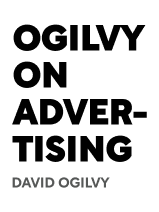

This article is an excerpt from the Shortform book guide to "Ogilvy On Advertising" by David Ogilvy. Shortform has the world's best summaries and analyses of books you should be reading.
Like this article? Sign up for a free trial here .
How do you deal with advertising complaints? What do you do when you have a bad client?
Advertising complaints can come from anywhere, but bad clients pose a particularly troubling problem. It’s important to deal with bad clients swiftly.
Read more about dealing with advertising complaints from bad clients.
Advertising Complaints and Dealing With Bad Clients
Everyone wants good clients, such as “first-class” businesses, but when you’re first starting your agency or in a dry spell, you might feel like you can’t be picky. However, bad clients can do huge damage to your agency, so don’t take on just anyone, no matter how desperate you are.
Be cautious of, avoid, or drop the following types of clients:
- Those who won’t be able to pay you. Profit margins in advertising are slim, so you can’t afford to not be paid.
- Those with different company cultures that would be incompatible with yours.
- Those with potential but no current clout. These accounts could take off, but few of them do.
- Those who make the people working on their account miserable. Your staff’s morale is more important than one client.
- Those who are failing, because they sometimes switch agencies often. For example, when Pan American started to struggle, they switched agencies five times in approximately 10 years. (Most major accounts keep their agencies for decades. For example, General Motors used the same agency for 70 years.)
Public Opinion on Your Agency
No one’s going to say anything negative about you or your agency to your face, so pay a research organization to do a survey and find out what companies think of you. If the survey turns something up, even if you fix the problem quickly, it will take some time for your reputation to change. This should turn up any advertising complaints you might be worried about.
Conflicts of Interest
It’s common practice that agencies don’t take on more than one client in one category. (Shortform example: If you already advertise for a shoe company, you wouldn’t sign up Keds.)
However, conflicts of interest can become complicated quickly. For example, if you have two clients in different businesses but one decides to expand, do you have to drop one of them? If you have two clients in the same business but in different cities, is that a problem? Additionally, some clients don’t want their agencies to represent anyone who might even indirectly affect their sales.
McKinsey’s Marvin Bower thinks that there’s no harm in advertising agencies representing competing clients. He says that even if the agency staff responsible for competing accounts shared all their knowledge, it wouldn’t negatively impact the sales of either company because companies are so different.
Whether or not representing more than one client in a category will actually affect either’s sales, don’t do it because it will make your clients unhappy.

———End of Preview———
Like what you just read? Read the rest of the world's best book summary and analysis of David Ogilvy's "Ogilvy On Advertising" at Shortform .
Here's what you'll find in our full Ogilvy On Advertising summary :
- What the "father of advertising" has learned from his decades' of experience
- How to craft easy-to-understand ads that work
- The 6 pioneers of the advertising industry






